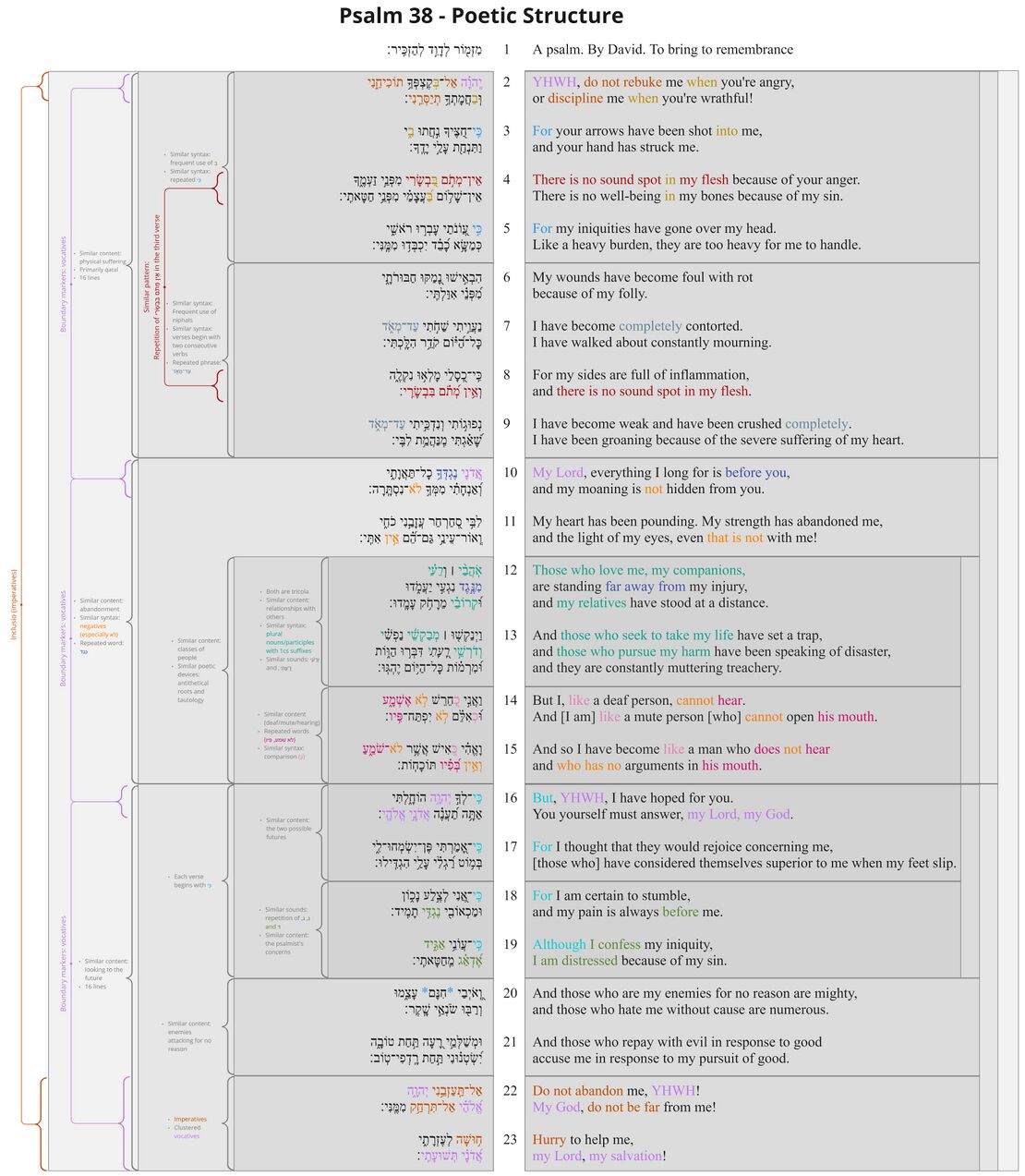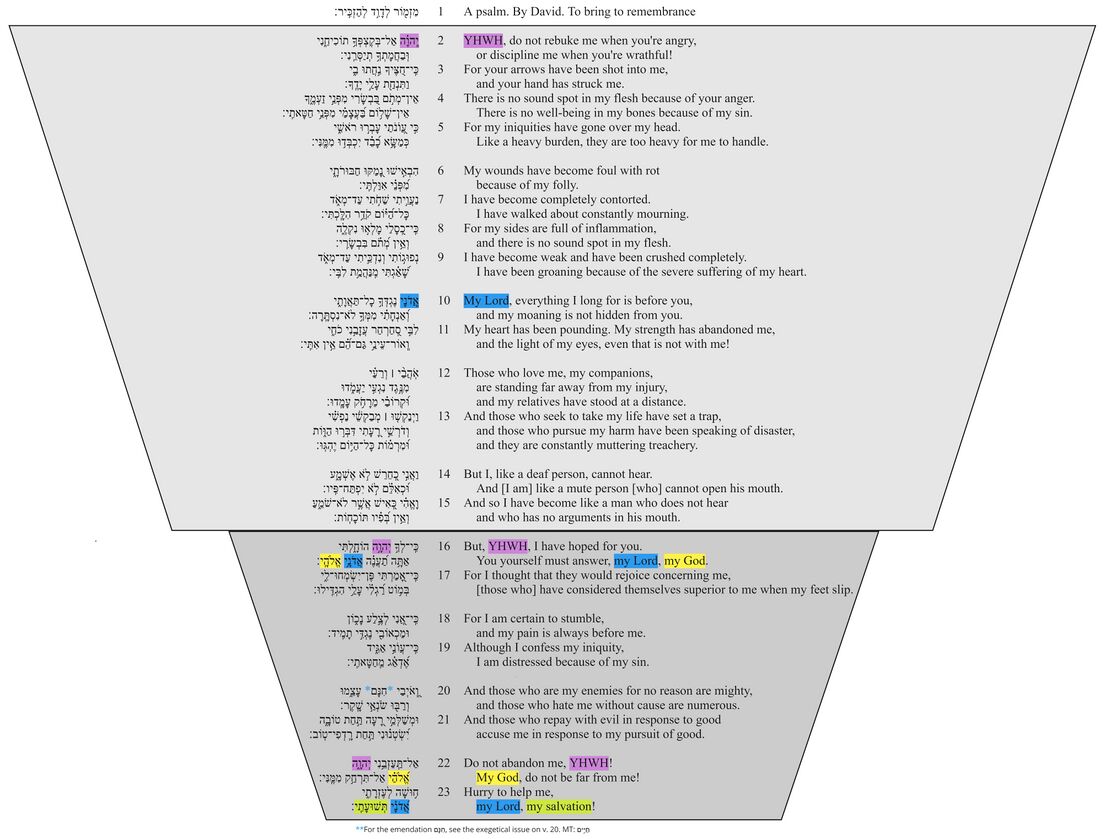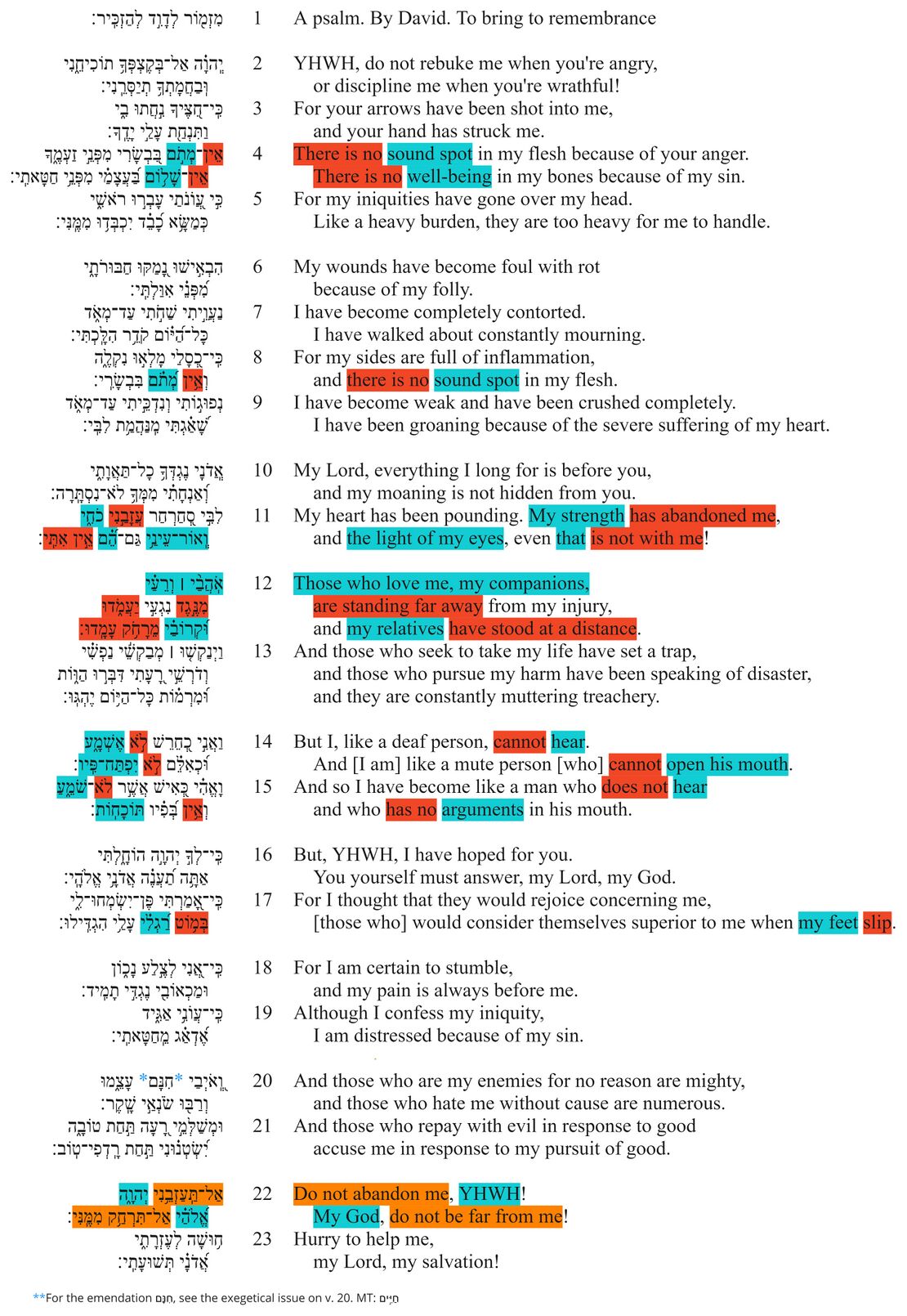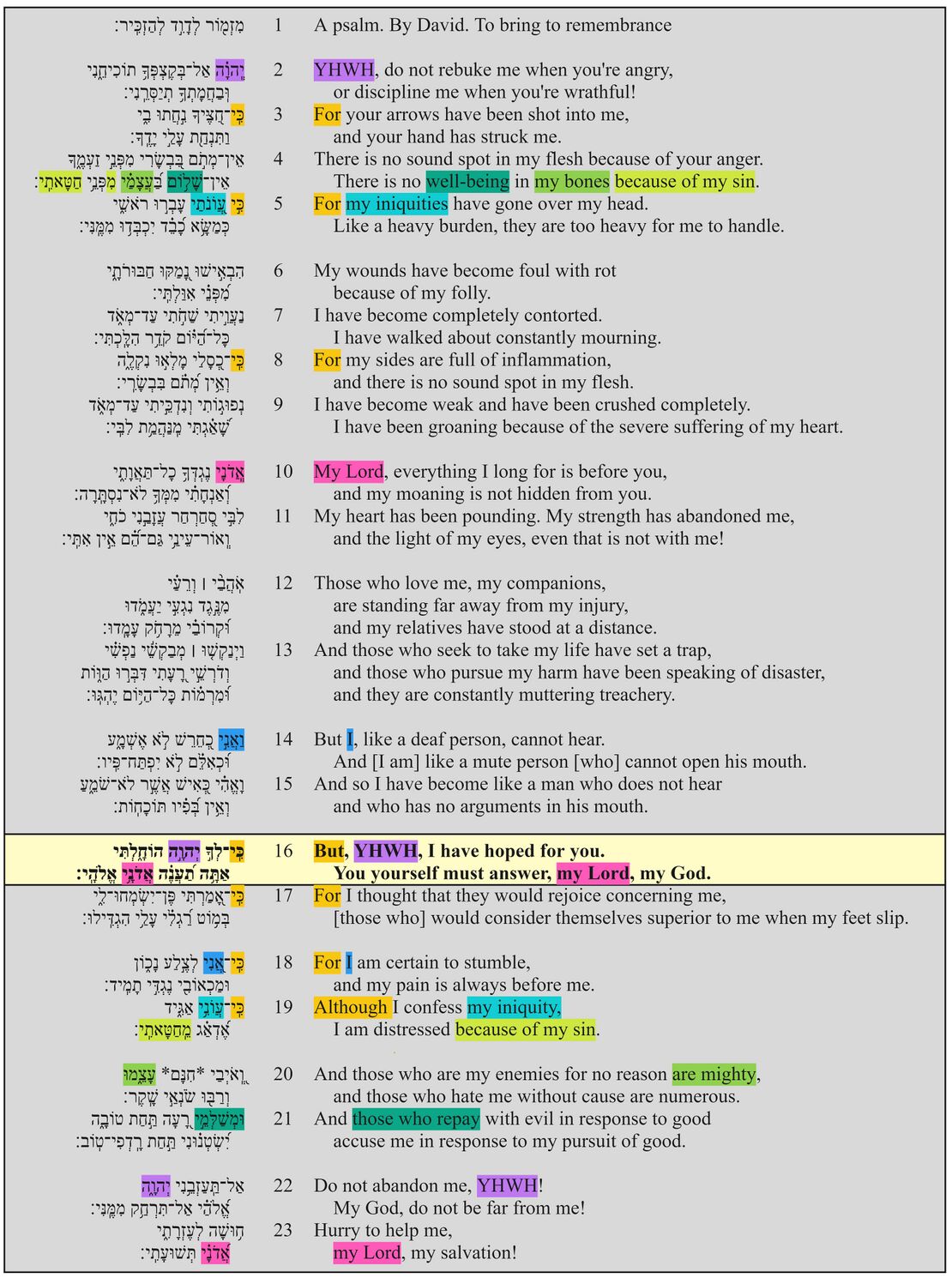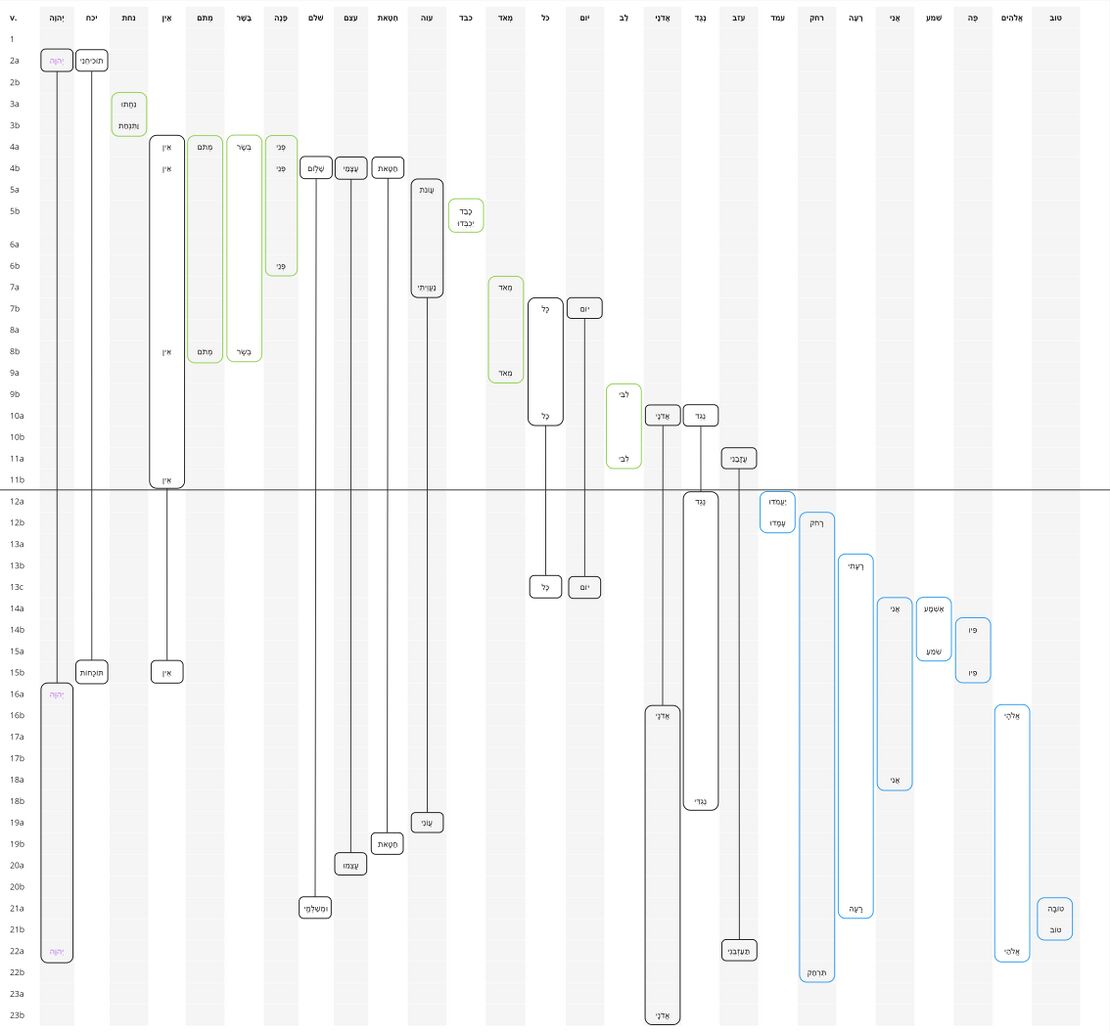Psalm 38 Poetry
About the Poetics Layer
Exploring the Psalms as poetry is crucial for understanding and experiencing the psalms and thus for faithfully translating them into another language. This layer is comprised of two main parts: Poetic Structure and Poetic Features.
Poetic Structure
In poetic structure, we analyse the structure of the psalm beginning at the most basic level of the structure: the line (also known as the “colon” or “hemistich”). Then, based on the perception of patterned similarities (and on the assumption that the whole psalm is structured hierarchically), we argue for the grouping of lines into verses, verses into strophes, strophes into stanzas, etc. Because patterned similarities might be of various kinds (syntactic, semantic, pragmatic, sonic) the analysis of poetic structure draws on all of the previous layers (especially the Discourse layer).
Poetic Features
Bibliography
- Arndt, William, Frederick W. Danker, Walter Bauer, and F. Wilbur Gingrich. 2000. A Greek-English Lexicon of the New Testament and Other Early Christian Literature. 3rd ed. Chicago: University of Chicago Press.
- Baethgen, Friedrich. 1904. Die Psalmen. Göttingen: Vandenhoeck und Ruprecht.
- Delitzsch, Franz. 1871. Biblical Commentary on the Psalms: Vol. 2. Translated by Francis Bolton. Edinburgh: T & T Clark.
- Fokkelman, J.P. 2000. Major Poems of the Hebrew Bible: At the Interface of Prosody and Structural Analysis (Vol 2: 85 Psalms and Job 4–14). Vol. 2. Studia Semitica Neerlandica. Assen: Van Gorcum.
- Gunkel, Hermann. 1926. Die Psalmen. 4th ed. Göttinger Handkommentar Zum Alten Testament 2. Göttingen: Vandenhoeck & Ruprecht.
- ________. 1998. An Introduction to the Psalms: The Genres of the Religious Lyric of Israel. Translated by James D. Nogalski. Macon, GA: Mercer University Press.
- Hupfeld, Hermann. 1868. Die Psalmen. Vol. 2. Gotha: Friedrich Andreas Perthes.
- Jenni, Ernst. 1992. Die Hebräischen Präpositionen Band 1: Die Präposition Beth. Stuttgart: W. Kohlhammer.
- Kim, Young Bok. 2022. Hebrew Forms of Address: A Sociolinguistic Analysis. Atlanta: SBL Press.
- Keel, Othmar. 1997. The Symbolism of the Biblical World: Ancient Near Eastern Iconography and the Book of Psalms. Winona Lake, IN: Eisenbrauns.
- Labuschagne, Casper J. 2008. “Psalm 38 - Logotechnical Analysis.” Numerical Features of the Psalms and Other Selected Texts. August 5, 2008.
- Leveen, J. 1971. “Textual Problems in the Psalms.” VT 21: 48–58.
- Lugt, Pieter van der. 2006. Cantos and Strophes in Biblical Hebrew Poetry: With Special Reference to the First Book of the Psalter. Vol. 1 of 3 vols. Oudtestamentische Studiën 53. Leiden: Brill.
- Mowinckel, Sigmund. 1962. The Psalms in Israel’s Worship. Oxford: Blackwell.
- Rashi. Rashi on Psalms.
- Ryken, Leland, Jim Wilhoit, Tremper Longman, Colin Duriez, Douglas Penney, and Daniel G. Reid, eds. 1998. Dictionary of Biblical Imagery. Downers Grove, IL: InterVarsity Press.
- Wolff, Hans Walter. 1974. Anthropology of the Old Testament. Translated by Margaret Kohl. Philadelphia: Fortress.
- Smend, Rudolf. 1888. "Ueber das Ich der Psalmen." In Zeitschrift für die alttestamentliche Wissenschaft 8. Giessen: J. Ricker'sche Buchhandlung.
- Terrien, Samuel L. 2003. The Psalms: Strophic Structure and Theological Commentary. ECC. Grand Rapids: Eerdmans.

